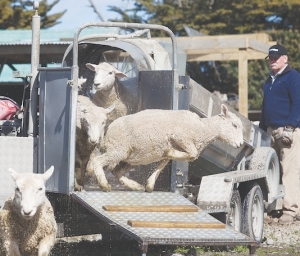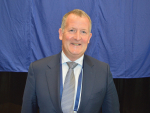And the cooperative’s in-house veterinarian, Gavin Goble, says preventative measures should not rely solely on chemical treatments.
“Flies must be attracted to lay their eggs on sheep,” he explains.
“So factors like faecal and urine stains, fleece rot, footrot and wounds make sheep more predisposed to flystrike. It is important to have an effective Integrated Pest Management programme that includes animal husbandry interventions such as strategic shearing, crutching or dagging and drenching, plus good management of footrot, wounds and skin conditions.”
Grazing management is also important.
“Well-fed sheep that are rotationally grazed on pasture previously grazed by cattle or deer, are less susceptible to flystrike. Keeping sheep away from warm and sheltered areas that have a particularly high fly rate, such as scrub filled gullies, bush margins and in the lee of shelterbelts, will also help to prevent the condition.”
Goble advises minimising potential fly breeding grounds by burying dead animals, covering offal pits and avoiding dung heaps or composting vegetation.
But while such management controls are important, so is strategic application, and correct application, of chemicals for flystrike prevention, he adds.
“Just as important as the product is the application method,” he stresses. “Ensure a good coverage of the chemical to skin level over the areas of the sheep most prone to strike, including the shoulders and back, rump and pizzle on rams.
“The gold-standard is saturation dipping, but jetting can be very effective if a sufficient volume of dipwash is applied.”
Pour-on and spray-on products are also widely used, he notes.
“The most commonly used chemicals are insect growth regulators (IGRs), namely diflubenzuron, cyromazine, triflumuron and dicyclanil, as these will generally ensure flystrike prevention for up to 12 weeks or more.”
Other chemicals include the synthetic pyrethroids or “SPs”, spinosad, imidacloprid and organophosphates (OPs). Many flystrike chemicals also control lice and it is becoming more common to use combination products.
“Most combination products include an IGR with another IGR, an SP, spinosad, imidacloprid or an OP. IGR-resistant fly strains do exist, so using combinations will control these and delay the development of resistance in susceptible strains.
“If in doubt, seek expert advice on the appropriate dip chemicals to use, along with the correct application method and timing.”
Ravensdown says flystrike is the most significant ectoparasitic disease of sheep in New Zealand, causing severe pain and suffering in animals and significant economic loss. The main flystrike season usually begins October-November and affects millions of sheep every year. Hundreds of thousands die, but even those that don’t suffer a severe setback.
“A struck animal may take six weeks to regain lost weight after treatment and up to eight months for its fleece to recover,” says Goble.
Flystrike is caused by blowflies, mainly Australian and New Zealand Green Flies (Lucilia cuprina and Lucilia sericata), laying eggs on sheep. When the eggs hatch the maggots invade the skin.
Sheep that are flystruck should, as soon as possible, have all wool removed from affected areas plus a surrounding margin of at least 10cm, before being treated.
“It’s important to remember that many preventative products do not kill live maggots, so farmers must select a product designed specifically for treatment.”

















